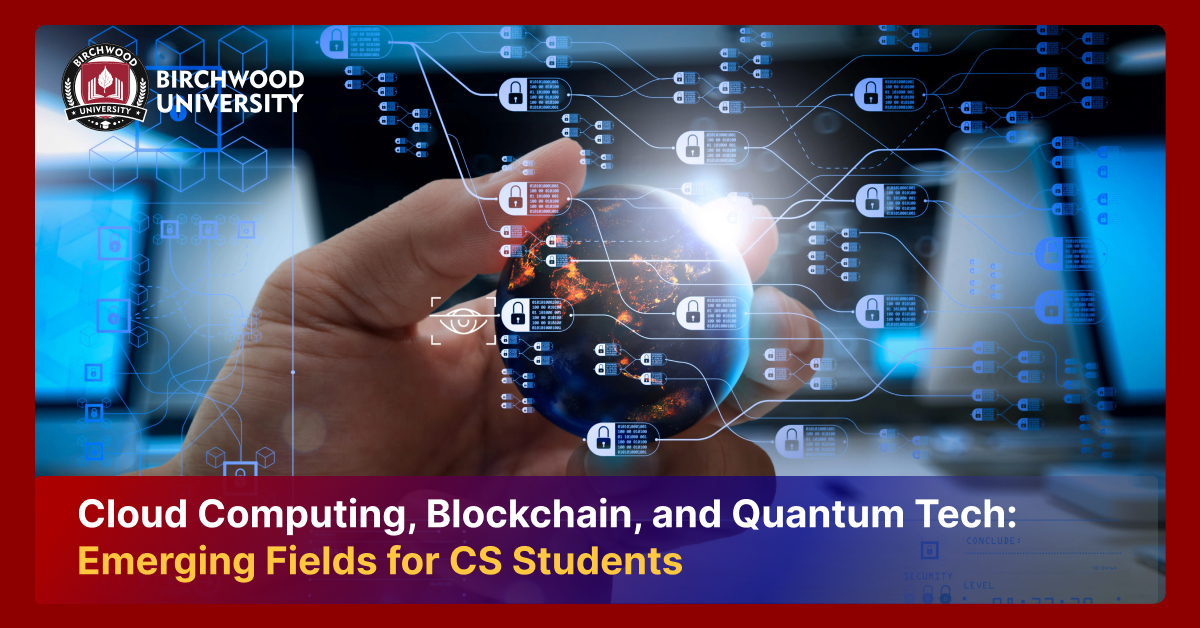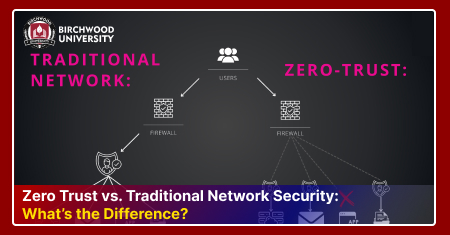What is the Difference between Generative AI and Agentic AI?
Oct 10, 2025Have you ever stopped to think about how the technology that fuels your favorite apps distinguishes between producing text and making choices? As we examine further into the realms of artificial intelligence, two terms frequently emerge: Generative AI and Agentic AI. But what do these terms truly mean, and how do they differ in their applications, capabilities, and impacts on our daily lives? This article aims to elucidate these topics, offering you the clarity and insights needed for deeper exploration.
What do we understand about Generative AI?
Generative AI refers to a subset of artificial intelligence focused on creating new content or data. This technology can produce text, images, music, and even video, mimicking human creativity. Generative models, like the widely-known GPT (Generative Pre-trained Transformer), utilize vast amounts of training data to generate outputs based on patterns they have learned.
Defining characteristics of Generative AI
1. Content creation: Generative AI excels in generating coherent and contextually relevant content. For example, OpenAI’s ChatGPT can draft essays, answer questions, and create conversational agents.
2. Data synthesis: This type of AI can combine existing data in innovative ways. An example is the ability of tools like DALL-E to generate images based on textual descriptions, blending various styles and elements seamlessly.
3. Adaptability: Generative AI can adapt its outputs based on the feedback it receives. This feature enriches its learning process, helping it to refine its outputs over time.
4. Applications: From art creation to automated journalism, generative AI finds applications in various industries. For instance, companies like Jasper are leveraging AI to create marketing content quickly and efficiently.
Illustrative cases of Generative AI
- OpenAI’s ChatGPT: This AI can draft essays, generate creative stories, and provide information on a wide array of topics. Its ability to engage in natural language processing makes it a valuable tool for educators and professionals alike.
- DALL-E: It can create intricate images by interpreting textual prompts, showcasing the fusion of artistic creativity and machine learning. Artists and designers are utilizing this tool to explore new avenues of creativity.
- Runway ML: This platform facilitates creators to use AI for video editing, generating unique visual content and enhancing traditional editing processes.
Technical Foundations of Generative AI
Contemporary Generative AI (GenAI) technologies are largely based on Large Language Models (LLMs) that employ transformer architectures—a framework that was first proposed by Vaswani et al. (2017). Transformers are based on self-attention mechanisms, which enable models to learn long-range dependencies within data as well as context-specific relations between words, images, or other inputs.
For images and multimodal tasks, newer categories of models have been introduced, such as:
Diffusion models (e.g., Stable Diffusion, DALL-E 3) — These stepwise convert random noise into coherent images by successive denoising steps, leading to very realistic visual output.
Multimodal transformers (e.g., GPT-4V, Gemini, Claude 3 Opus) — These combine multiple input modalities (text, images, audio, video) in a single architecture, allowing more deeper understanding and generation across media.
One of the key trends in the area of GenAI is the creation of hybrid architectures that have generation and retrieval intertwined.
Retrieval-Augmented Generation (RAG) incorporates an external knowledge base or database at inference time, anchoring model output in verifiable facts and decreasing any factual error.
Memory-augmented systems and tool-using models (e.g., ones that invoke APIs or search engines) are the next step, combining generative reasoning with access to
Strengths of Generative AI
Limitations & Challenges
Hallucinations & Factual Errors:
LLMs tend to produce coherent but false claims, particularly when the data is quite old or sparse. This is due to their probabilistic prediction mechanism—models learn to maximize linguistic coherence rather than truthfulness.
Bias & Fairness Issues:
Because training data mirror inequalities in the real world, models tend to replicate or increase bias and stereotypes. Ethical use involves bias auditing, dataset curation, and fairness intervention.
Limited Long-Term Reasoning & Planning:
The majority of GenAI systems are reactive and output responses to prompts without persistent goals, world models, or causal understanding. True "agentic" intelligence is still an ongoing research area.
High Resource Consumption:
Training and deploying large models requires massive computational and energy resources, and there is concern about sustainability and accessibility. Methods such as model distillation, quantization, and efficient fine-tuning (LoRA, adapters) are assisting in lessening this.
Exploring Agentic AI
Agentic AI, on the other hand, represents a different approach. This type of AI possesses the ability to act autonomously in an environment, making decisions based on its objectives. Unlike generative AI, which primarily focuses on creation, agentic AI emphasizes action and interaction within a specified context.
Distinctive attributes of Agentic AI
1. Autonomy: Agentic AI systems can operate independently, making decisions based on pre-defined plans and objectives. This feature sets it apart from generative AI, which requires user input to generate outputs.
2. Decision-making: These systems assess situations and determine the best course of action. They implement algorithms to evaluate various factors, weighing potential outcomes to optimize their decisions.
3. Interactivity: Agentic AI can interact with its environment, gathering data and adjusting its behaviour accordingly. For instance, self-driving cars or autonomous cars must constantly analyze their surroundings to make driving decisions.
4. Applications: Industries such as robotics, healthcare, and finance utilize agentic AI for various purposes, from managing robotic surgery to algorithmic trading in stock markets.
The "Agent Loop" (Perceive → Plan → Act → Reflect)
Agentic AI are systems that not only create content, but independently make decisions, plan out actions, and work towards goals. They possess "agency" as they perform workflows, make decisions, and modify responses to changing situations. A primary model of agentic AI is the self contained reasoning loop:
1. Perception/ Context — the agent consumes data from sensors, user inputs, APIs, databases.
2. Planning/ Strategy — breaks down a high-level objective into subobjectives and order.
3. Action — performs steps (calling APIs, tweaking variables, invoking workflows).
4. Reflection/ Feedback — assesses results and updates subsequent plans.
This iteration continues until the objective is achieved or updated.
Essential Components of Agentic Systems
Memory/ State retention: Maintaining contextual or past state throughout steps.
Tool usage/ API calls: Calling out to external services or scripts.
Decision logic/ reasoning: Heuristics, optimization, reinforcement learning.
Coordination/ orchestration: Particularly in multi-agent configurations.
Self-reflection/ self-audit: Verifying correctness and revising behaviors.
Recent research places several agents acting together, emergent planning, and dynamic autonomy as next frontiers.
How It Differs From Traditional "Automation"
Unlike traditional rule-based automation, which strictly follow explicit command, agentic AI can adjust, recover from failure, and redirect. It's more robust, autonomous, and closer to human-level agency (within boundaries
Demonstrative examples of Agentic AI
- Autonomous vehicles: Companies such as Tesla are pioneering agentic AI to improve vehicle navigation and decision-making. These vehicles use sensors and algorithms to make instant decisions, demonstrating agentic capabilities.
- AI in healthcare: Systems like IBM Watson can analyze patient data and recommend treatment options, highlighting Agentic AI's ability to make decisions. In emergency rooms, AI can prioritize patients based on severity, optimizing resource allocation.
- Smart assistants: Devices like Amazon's Alexa and Google Assistant employ agentic AI to manage tasks, from scheduling appointments to controlling smart home devices, operating based on user commands and preferences.
Major Differences between Generative AI and Agentic AI: A Simple Comparison Explained
Please find below a tabular comparison between GenAI and Agentic AI:
Where They Complement Each Other:
Gen AI and Agentic AI are not mutually exclusive, but in most systems they coexist:
An agentic AI might call upon a generative model to compose an email draft within a workflow.
Generative AI can provide content innovation, whereas agentic AI provides decisioning and action.
In customer service, a gen model composes your response; an agentic module sends your emails, schedule calls, etc.
Memory-augmented systems and tools-using models (e.g., those calling APIs or search engines) represent the next step, merging generative reasoning with real-world data access and specialized computation.
Present trends in Agentic AI and Generative AI
Generative AI trends
1. Deepfake technology: Generative AI is at the forefront of creating hyper-realistic deepfakes. While this has entertainment applications, it also raises ethical concerns about misinformation. The potential misuse of deepfakes in politics and media underlines the need for responsible use.
2. Text-to-Image synthesis: Platforms such as Midjourney help users generate images from textual prompts, making art creation more accessible. This democratization of creativity promotes innovation among users with varying artistic backgrounds.
3. Art and music creation: Tools such as AIVA are helping musicians and artists generate unique compositions, pushing the boundaries of traditional creativity. Artists are using these technologies to explore new styles and genres, creating hybrid forms of art.
4. Content personalization: Businesses are using generative AI to create personalized marketing campaigns, adapting content to individual preferences based on data analytics. This trend increases customer engagement and drives sales.
Agentic AI
1. Financial algorithms: In finance, agentic AI is revolutionizing trading strategies by analyzing market data and executing trades at lightning speed. Hedge funds are employing AI-driven algorithms to identify trends and make knowledgeable investment choices.
2. Robotics and automation: Industries are progressively adopting agentic AI for tasks that require precision and efficiency, such as warehouse automation and manufacturing processes. Amazon, for example, employs robots in its fulfillment centers to streamline operations and elevate productivity.
3. Smart cities: Agentic AI is being integrated into urban planning and management, optimizing traffic flow, energy usage, and public safety systems. Cities like Barcelona are using AI to enhance public services, improving the quality of life for residents.
Use Cases Across Industries
Use Cases for Generative AI
Gen AI is already influencing industries such as:
Content and Marketing: Businesses utilize platforms like Jasper or ChatGPT to compose blogs, advertisements, and product descriptions within minutes. Some newsrooms may employ it to generate articles and social media posts.
Design and Media: Software like Midjourney and Stable Diffusion enable designers to create artwork, logos, and storyboards. In movies, GenAI is helping in development of stories, characters, plots and visual effects.
Software and Tech: Programmers depend on GitHub Copilot to complete code in an efficient manner, faster and also recommend repairs. MIT research in 2024 discovered that GenAI reduced developers' time by almost 55%.
Data and Research: GenAI is employed by scientists to create artificial data for training more secure AI systems and testing concepts without actual user information.
Language and Communication: AI summarizers are being utilized in classrooms and workplaces to convert long pieces of writing into short, understandable notes.
Agentic AI Use Cases
Please find below use cases for agentic AI:
Customer Service: Agentic systems such as Salesforce's Einstein Copilot can answer customer questions, send reminders, and even book meetings automatically.
Operations and IT: Others employ "self-healing" software that can identify system glitches and repair them without human intervention.
Healthcare and Science: Research labs are piloting AI lab assistants that design and execute tiny experiments in order to accelerate drug discovery.
Logistics and Retail: Intelligent agents track inventory, restock materials, and coordinate delivery routes. UPS and Amazon currently employ similar technology.
Hybrid and Future Applications
Numerous new instruments blend both the realms—GenAI and Agentic AI. For instance:
Personalized Shopping: A generative model composes amiable messages while an agentic system selects items for every customer.
Smart Office Assistants: Applications such as Microsoft Copilot use both—one half knows what you require, the other performs actual actions (sends emails, makes reports).
With these systems expanding, there will be increasing integration across industries of creative generation and autonomous action—making people work quicker, think larger, and concentrate on what matters most.
Recent breakthroughs in Generative AI include: Video creation powered by AI like Google Cloud and InVideo's platform that converts text inputs into high-quality professional-grade videos. In collaborative robotics, generative AI makes robot-human collaboration more efficient, enhancing productivity. Healthcare uses are also broadening, with AI screening for conditions such as diabetic retinopathy prior to symptom onset. In education, generative AI is designing personalized learning experiences, serving as digital tutors and improving access for underserved populations. In Agentic AI, the breakthroughs include: Agentic transactions via ChatGPT, enabling seamless retail payments and financial operations. Enterprises are also adopting AI-driven software development tools, like OpenAI's Agent Builder which accelerates product release cycles with AI-generated code. Enterprise automation agentic AI is simplifying complex multi-step processes, cutting overhead operations. Meanwhile, implementing empathy and emotional intelligence within agentic systems is becoming competitive advantage, improving customer interactions.What's New in Agentic AI and GenAI — 2025 Updates
What's Can We Expect in Future
As the world of smart technology is changing fast, let's see what we can expect in the near future:
Multi-Agent Ecosystems
In the future, there will not be a single "smart agent" that does everything. There will be lots of little agents, with each having just one task—like one with finances, one with legal stuff, and one with customer service. These helpers will communicate with each other and exchange information to complete tasks quicker and smarter.
Autonomy Fluidity and Emergence
These intelligent systems won't simply adhere to set rules. They will develop the ability to alter their behavior based on what is occurring in their environment. That implies they can make decisions independently of how to modify plans, somewhat like humans might when things don't turn out as planned. This however blurs human vs machine boundaries, posing implications for creativity and accountability.
Legal/ IP/ Liability Shift
With AI systems contributing more autonomously in future, modern IP frameworks may struggle to attribute authorship or liability.
"Agent Washing" vs True Agency
Today, many firms label their goods as "smart" or "autonomous," although they are not really autonomous. With time, consumers will become more adept at distinguishing between genuine smart systems that are capable of thinking and responding on their own basic ones that only execute scripts.
Explainable and Safe Agents
Individuals will want to know why a smart system made a particular decision. Therefore, designers will concentrate on making them more transparent—easy to understand and explain. This builds trust and keeps errors at bay.
Integration with Core Business Systems
You will see that in near future these machines will be integrated into the systems we already have, such as customer databases, HR software, and finance systems. They will assist individuals in making decisions before the event occurs, rather than simply respond after the event. For instance, a system can realize a decline in sales and prepare a marketing campaign proactively before the humans even request it.
Conclusion
As we stand on the brink of an exciting new era in artificial intelligence, understanding the distinctions between generative AI and agentic AI becomes paramount. These technologies not only describe our present digital ecosystem but also lay the groundwork for future innovations that will redefine how we interact with machines.






